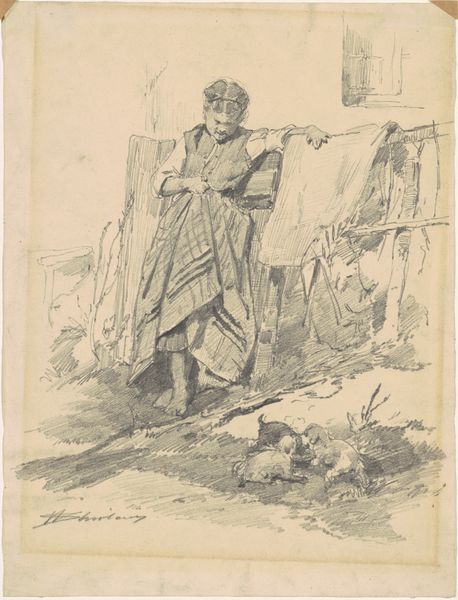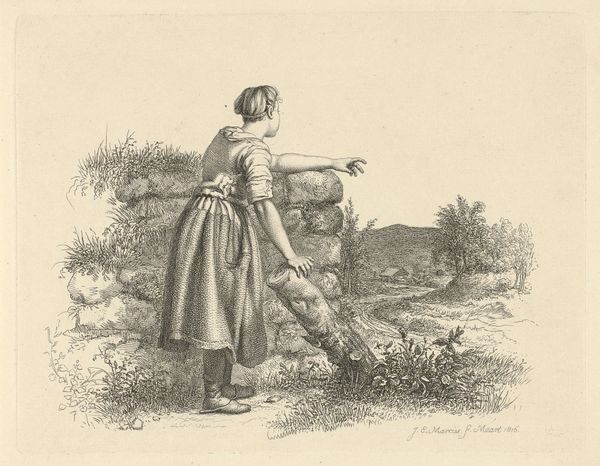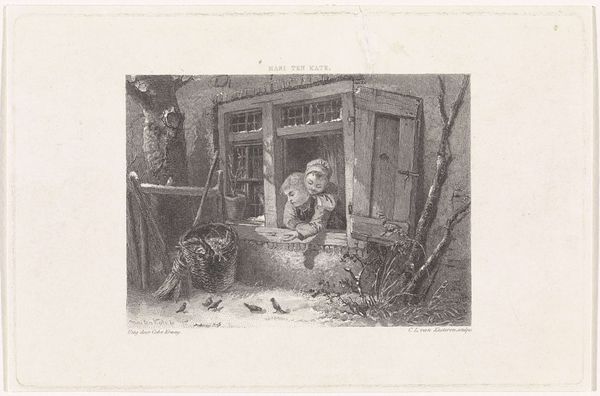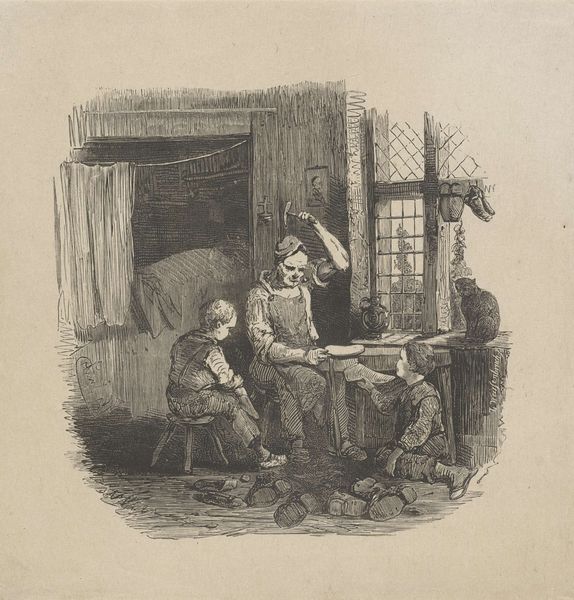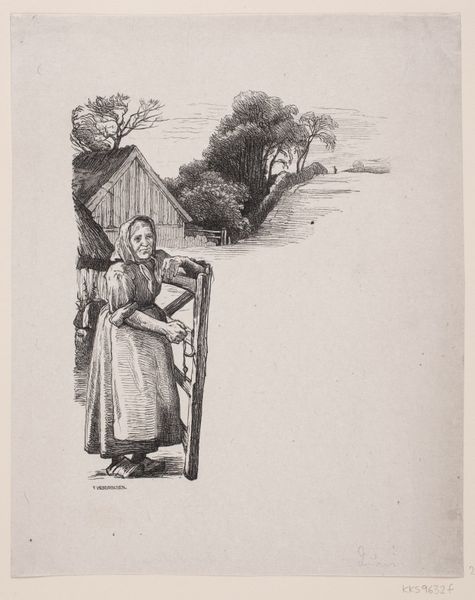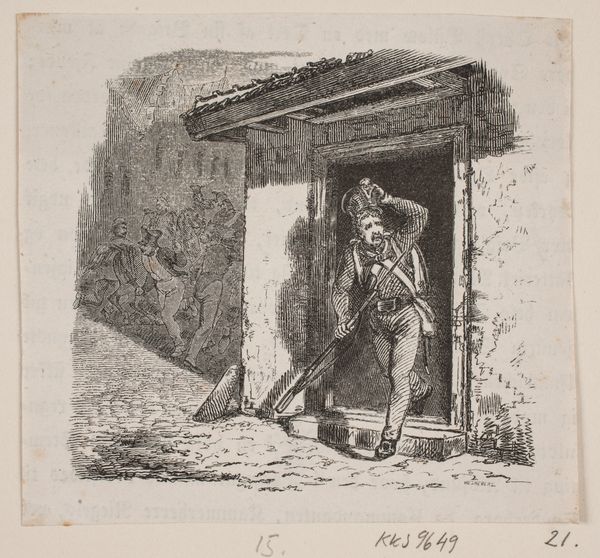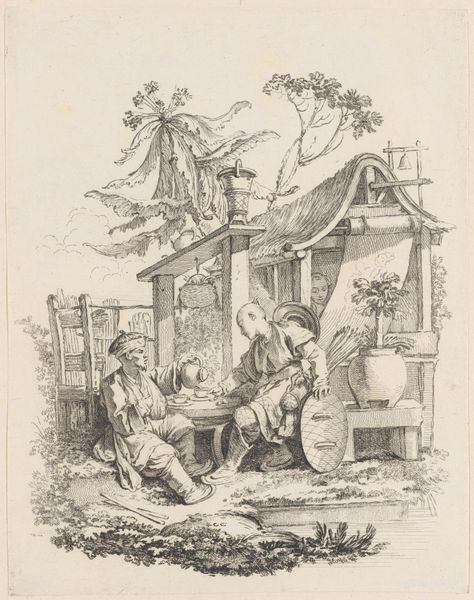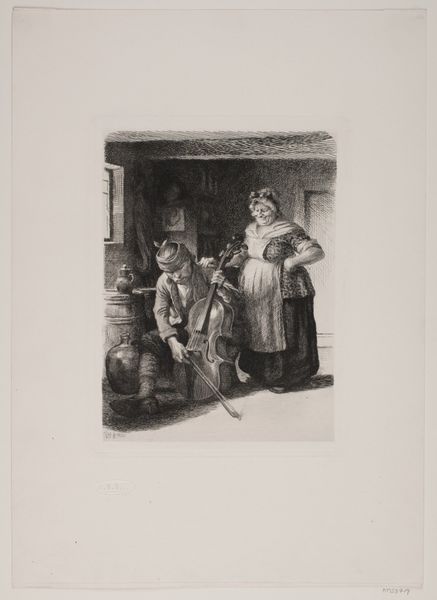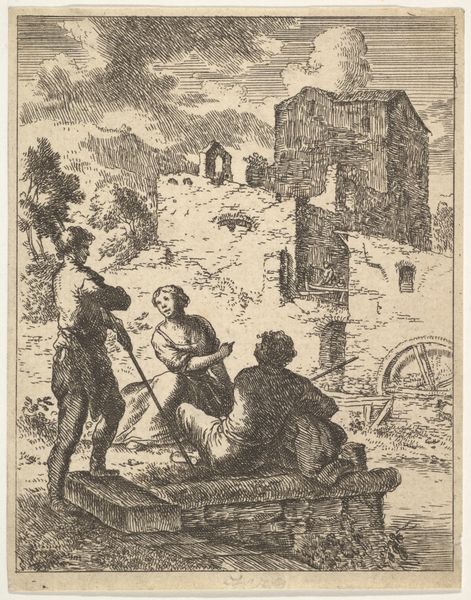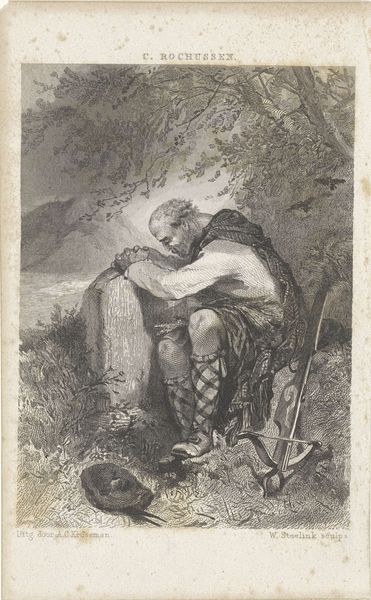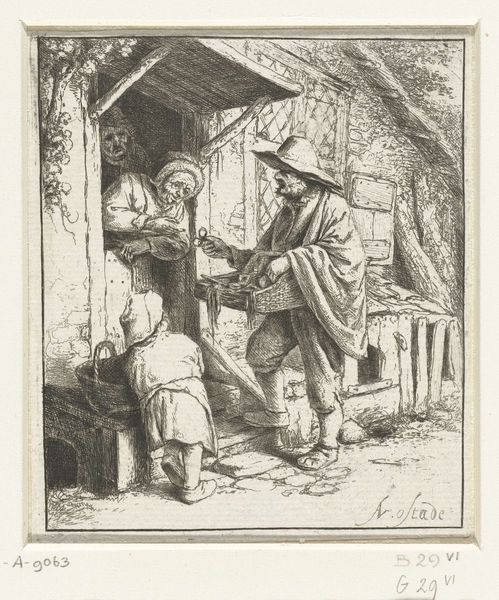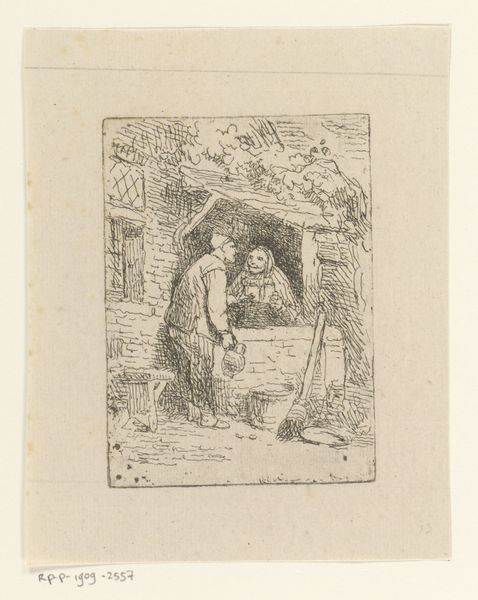
Dimensions: 200 mm (height) x 140 mm (width) (bladmaal)
Editor: So, this engraving, "En Bondedreng kigger ind ad et Vindue," or "A Farmer's Boy Looking in a Window," dating sometime between 1829 and 1899, by H.P. Hansen, caught my eye. It’s surprisingly detailed for such a small print. I’m immediately struck by the contrast between the boy outside and the implied scene inside. What kind of narrative is Hansen constructing here? Curator: Indeed. This piece invites us to consider the socio-economic divisions of 19th-century Denmark. Notice the boy’s clothes and the rustic cabin—these are visual cues about his social standing. What does it signify, placing him *outside* looking *in*? Editor: Perhaps it speaks to limited opportunities, a yearning for something more. He's literally on the outside looking in, possibly at a life he can't access? Curator: Exactly. And how might this image function within the broader context of Romanticism? Romanticism often idealized rural life, but this engraving seems to offer a more complicated view, hinting at social inequalities and perhaps even the limitations of that ideal. Are we, the viewers, also positioned as outsiders, looking in on this scene of rural life? Editor: That’s fascinating. I hadn’t thought about the viewer’s role in that way. So it’s not just about what the artist intended, but also how institutions like the museum shape our understanding of the artwork and, by extension, these historical power dynamics? Curator: Precisely. Museums play a significant role in shaping which stories are told and how they are interpreted. Analyzing pieces like this challenges us to look critically at both the artwork itself and the institutions that present them. Editor: This has really changed how I see this print; it’s much more than just a cute depiction of a boy. It's a reflection of societal divides and how we continue to engage with them through art. Curator: I agree, and that's why historical context is essential. It enriches our viewing experience and encourages critical thought.
Comments
No comments
Be the first to comment and join the conversation on the ultimate creative platform.
